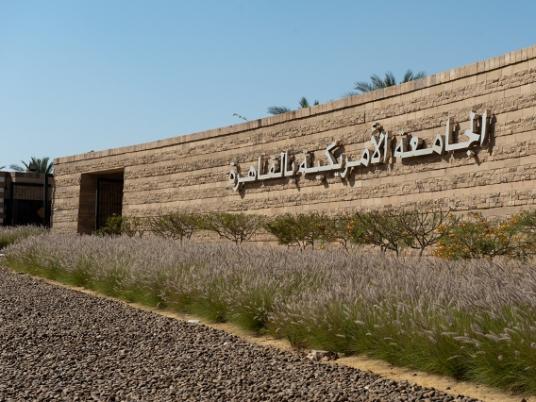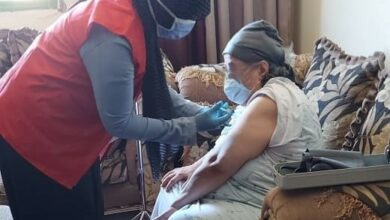
As people grow older, the vulnerability to age-associated diseases increases. While some diseases are curable, others are chronic and can only be prevented, not treated.
In a press conference held Thursday by the Egyptian Vitreoretinal Society, experts revealed a glimmer of hope for treating age-related macular degeneration, the world’s leading cause of blindness among people over 55.
AMD affects the macula, which is the center part of the retina that is responsible for high visual acuity. AMD causes a rapid deterioration of central vision, which makes older people see fine details unclearly and incapable of engaging in common daily activities including driving, watching TV and reading.
Though AMD is as twice as prevalent as Alzheimer’s disease, affecting nearly 30 million people worldwide, many people are unfamiliar with it.
Hany Hamza, an ophthalmology professor at Cairo University and secretary general of the Egyptian Vitreoretinal Society, said AMD can occur in either a dry (nonexudative) or wet (exudative) form.
Wet AMD poses a serious threat due to its fast progress, which can lead to total vision loss in less than three months, Hamza said. The dry form advances slower and patients might not notice a major change in vision.
“The number of people going blind as a result of wet AMD is increasing alarmingly,” Hamza said.
“Wet form accounts for 90 percent of blindness resulting from AMD, and it is estimated that 500,000 people will lose their sight annually from the disease, bringing the total to almost 6.3 million by 2030.”
The appearance of dark spots in central vision is among the severe symptoms of developing AMD.
“The dark spot starts small, but if it is not treated immediately, it will grow gradually in size until it covers the whole eye and causes blindness,” said Magdy Moussa, professor of ophthalmology at Tanta University, adding that the most common early sign is blurriness.
Early detection and proper treatment is key to saving vision.
“AMD is like any other disease — if it is diagnosed in its early stage, the breakdown of the eye’s macula could be prevented and sight could even be restored in some cases,” Hamza said.
Self-examination can be done easily and periodically on both eyes. Cover one eye, then look directly at a straight line. If the line appears blurry, you should pay a visit to an ophthalmologist.
Hamza said that people who are vulnerable to developing AMD should constantly monitor their vision and see a physician on a regular basis.
“Smoking, high blood pressure, having close family member with the disease, obesity and malnutrition could increase people’s risk of developing the disease,” Hamza explained.
The development of a new class of anti-vascular endothelial growth factor drugs was the conference highlight, offering an effective therapy in late stages of vision damage.
“Anti-VEGF drugs work on targeting VEFG, a protein involved in causing new blood vessel formation,” Moussa said.
In the case of AMD, these new blood vessels are unstable and tend to leak fluid and blood under the retina, causing loss of central vision.
“The anti-VEGF drugs work on inhibiting the growth of these new blood vessels and absorbing the fluid. Consequently, the vessels that have already occurred start to decrease, and vision could possibly restored in early stages,” Moussa explained.
Hamza wrapped up the press conference by underlining the necessity of facilitating access to treatment through the National Health Insurance Organization to save wet AMD patients from potentially debilitating outcomes.
“In peer countries, treatment for wet AMD is reimbursed. With more than 50,000 patients in Egypt, it is critical for similar action to be taken here,” Hamza emphasized.
“This will reduce preventable sight loss and minimize the substantial emotional, physical and economic burden associated with treating the disease as an acute condition,” he concluded.




